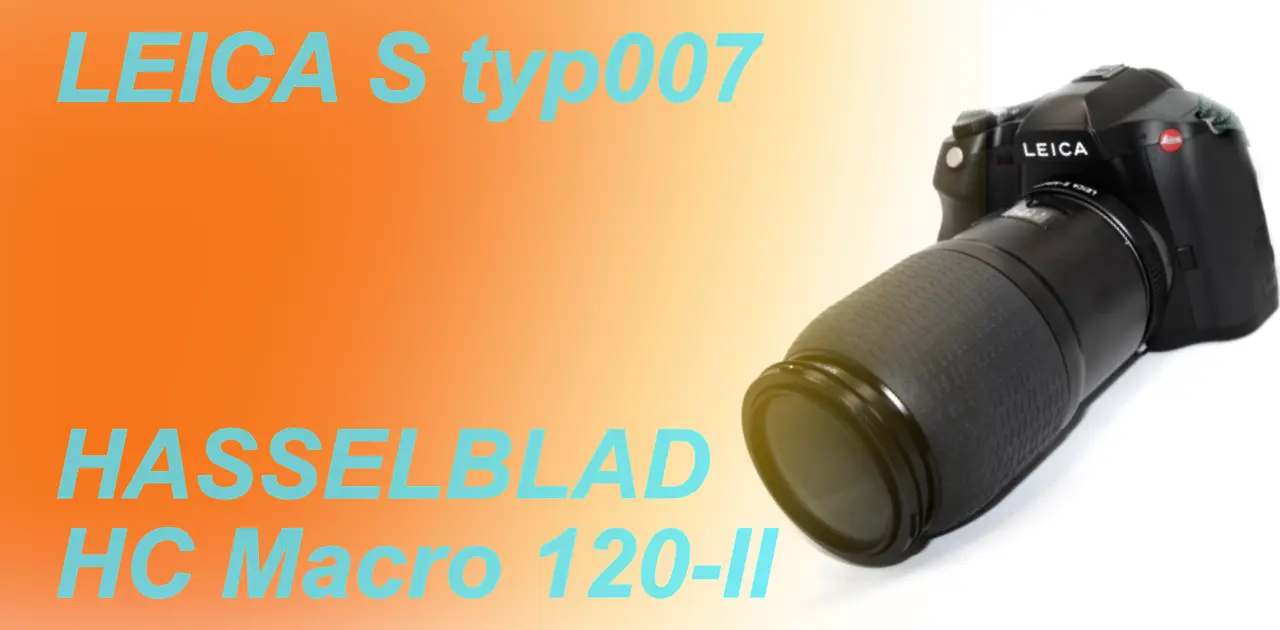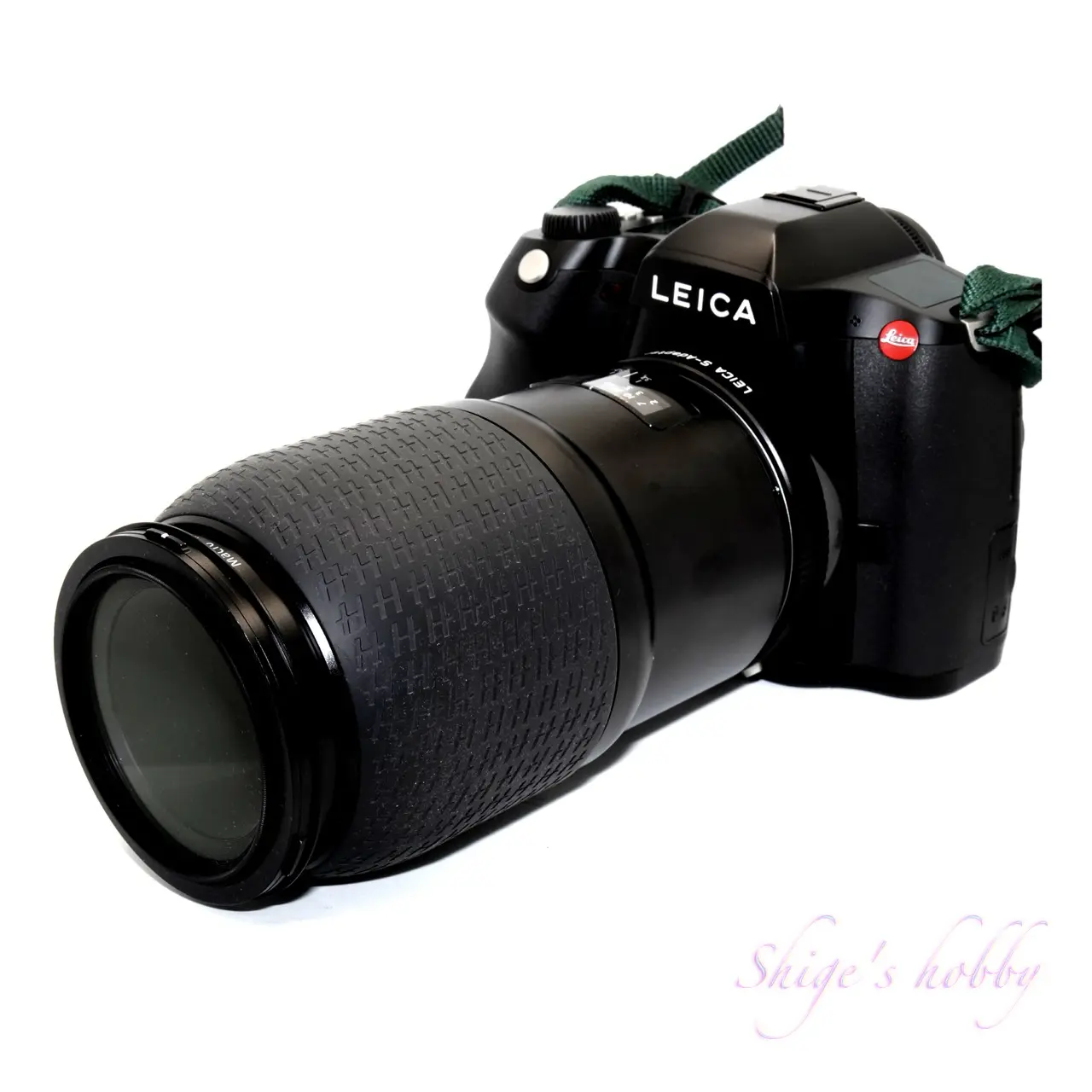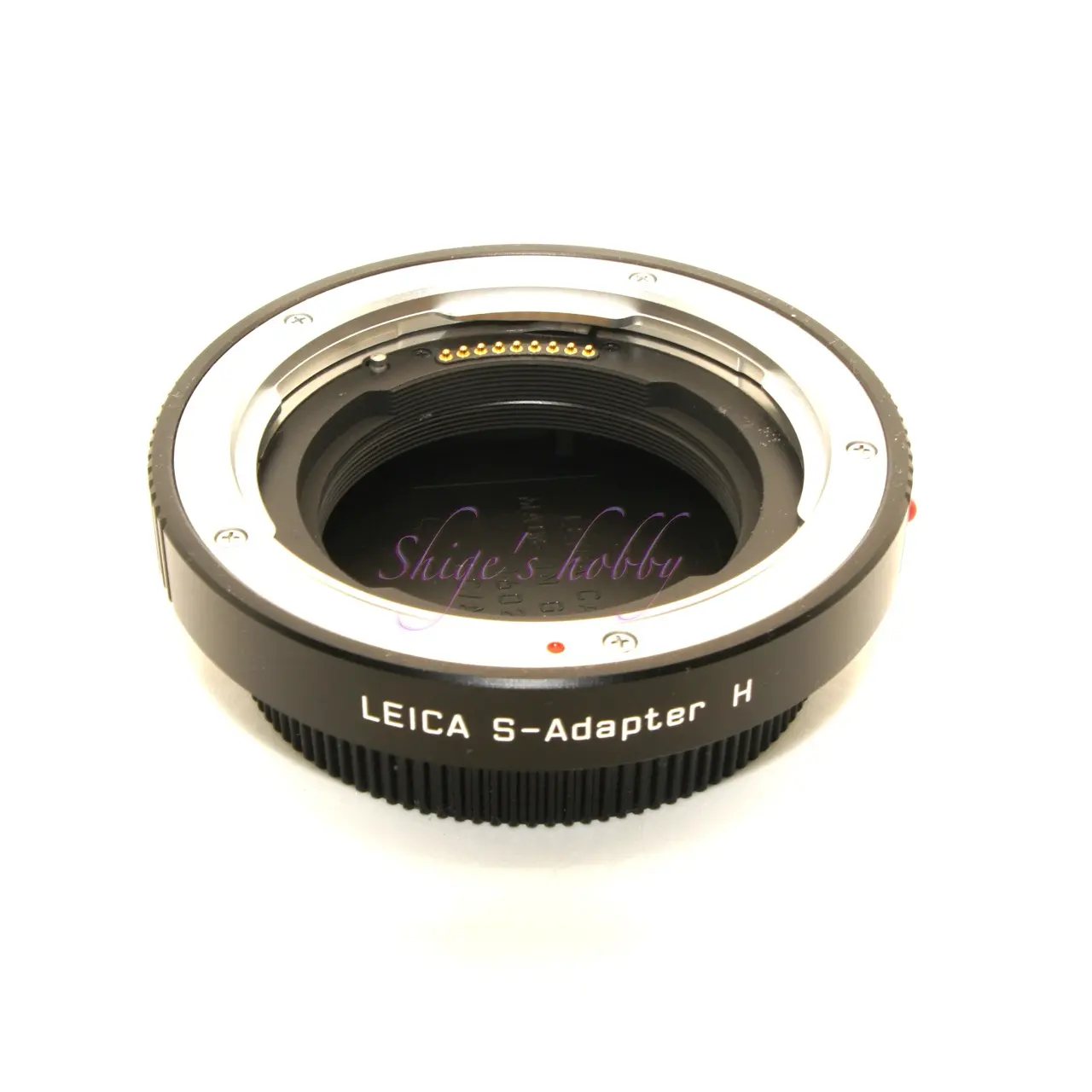LEICA S typ007 with the HASSELBLAD HC 120mm Macro II

A review and sample photos of the AF macro lens HASSELBLAD HC 120mm II used with a Leica S typ007 digital SLR camera.
- Please see the disclaimer regarding advertising here.
- Italicized links in the text are advertisement links that take you to other sites.
Table of contents
Gallery
Review


The Hasselblad HC 120mm Macro II is a medium telephoto lens for the Hasselblad H-series. A review of the lens using it with a HASSELBLAD X-series camera is provided on the linked page.
Hasselblad’s H-series lenses come in two main versions: the newer version known as the Orange Dot, and the older, unbranded versions, including the FUJINON brand. When used with Leica S-series cameras, it can be used with both new and older models, and autofocus is possible as long as there are no problems with the lens.
This review focuses solely on use with the LEICA S typ007.
When using the Hasselblad HC 120mm Macro II with the LEICA S typ007, autofocus is possible by using the genuine Leica S-Adapter H. When used with the 45mm x 30mm medium format digital sensor used by the LEICA S-series, the focal length is equivalent to 96mm in 35mm format.
The combined weight of the lens, camera, and mount adapter is just under 3kg, with the lens alone weighing around 1.5kg, making the lens the heavier part of the camera system and making it feel unbalanced when holding it.
The focal length of 120mm equivalent is easy to handle for a medium telephoto lens, and it provides the compression effect of an actual focal length of 150mm, making it well-suited for portraits and other situations where the subject is central. The lens also produces beautiful, smooth bokeh in the foreground and background, which is effective at making the subject stand out.
MyHasselblad HC 120mm Macro II is the latest version of the orange dot lens, but the HASSELBLAD X2D-100C from the HASSELBLAD X series cannot be used with autofocus. This is a limitation of the camera itself. However, with the LEICA S series, autofocus can be used by using the LEICA S-Adapter H.
When using autofocus with the Hasselblad HC 120mm Macro II and the LEICA S typ007, the focusing speed is slow, but the LEICA S’s single, clean, central focus point provides satisfactory focusing accuracy at distances of around 1m when focusing from the center. This can be difficult in scenes with no significant contrast between subjects, but this is unavoidable, as this is difficult for any autofocus camera.
Furthermore, autofocus accuracy is even less reliable at macro distances of less than 1m. Furthermore, when moving the lens to change the composition from the focused position, the focus position shifts sensitively at close distances, requiring the photographer to make corrections through the viewfinder. Unlike the latest multi-point focus points, you can’t expect the camera to automatically focus where you want. For this reason, manual focus is almost always used in the macro range. At the maximum aperture of f/4, the focusing plane is very thin, and it requires some practice to aim at the desired spot.
Specifications, considerations, etc.
Here I will briefly consider three relatively new medium format macro lenses.
- Hasselblad HC 120mm Macro II
- Carl Zeiss APO Makro Planar 120mm f/4
- Leica APO Macro Summarit S 120mm F2.5
Carl Zeiss’ APO MAKRO PLANAR 120mm F4 is small and light among macro lenses for medium-format cameras, due to its manual focus only design and lack of a shutter mechanism.
The APO MAKRO PLANAR 120mm F4 uses the classic planar format with two additional lens elements to expand the focusing distance range. The lens movement to determine the focus position involves moving both the front and rear groups, and the lens extends as the focusing distance decreases from infinity. Using an AMP lens, you can see for yourself how difficult it would be to drive AF with this lens as is.
The HASSELBLAD HC120mm Macro II uses the front lens group to determine the focus position, and this lens moves back and forth using a motor during AF operation. This allows for a reduced number of lens elements, reducing the weight of the moving parts.
Thus, with 2020s technology, ignoring the cost, it may be possible to achieve AF on the APO MAKRO PLANAR 120mm F4 by using engineering plastic for the lens barrel to make it lighter, using thin lenses, and driving them with an ultrasonic motor. I would love for Carl Zeiss to try making the APO MAKRO PLANAR 120mm F4 autofocusable.
Leica’s APO MACRO SUMMARIT S 120mm has a bright maximum aperture of F2.5 and is equipped with an autofocus mechanism, yet is smaller and lighter than the APO MAKRO PLANAR 120mm F4. This is because the lens is known as a “half macro lens,” with a maximum magnification of 0.5x (1:2), making its close-up shooting performance inferior to the APO MAKRO PLANAR 120mm F4 and the HASSELBLAD HC120mm Macro II.
The APO MAKRO PLANAR 120mm F4 and HASSELBLAD HC120mm Macro II are known as life-size macro lenses with a maximum magnification of 1.0x.
- There’s a lot of information online about the difference between 1:1 macro and half macro. To summarize, when you photograph a subject and the image on the film or sensor appears the same size as the actual object, it’s called 1:1, while when it appears half the size, it’s called half 1:2.
- With digital cameras, you view the image on the sensor on a monitor, so it’s difficult to compare the actual size of the subject when photographed, and so the terms 1:1 and half are difficult to understand with digital cameras.
| Lens name | Carl Zeiss APO Makro Planar 120mm f/4 | Hasselblad HC 120mm Macro II | Leica APO Macro Summarit S 120mm F2.5 |
| Focal length(mm) | 120 | 120 | 120 |
| Max aperture | 4 | 4 | 2.5 |
| Min aperture | 32 | 45 | 22 |
| Lens Construction | 8 elements in 5 groups | 9 elements in 9 groups | 9 elements in 7 groups |
| Min distance(m) | 0.3 | 0.39 | 0.57 |
| Lens length(mm) Mount frange to lens top | 104 | 166 | 128 |
| Max diameter(mm) | 86 | 96 | 91 |
| Filter Size(mm) | 72 | 67 | 72 |
| Weight(g) | 796 | 1410 | 1135 1205(With lens shutter) |
| Release date | 1999 | – |
Reference links
- HASSELBLAD HC MACRO 120mm official web site
- CARL ZEISS APO MAKRO PLANAR 120mm F4・Official CARL ZEISS PDF
- LEICA APO MACRO SUMMARIT 120mm F2.5 ・Leica official page
Affiliate link

Update history
- 2025.8.12
- 2024.9.13
- 2023.06.27:First draft

Leave a Reply